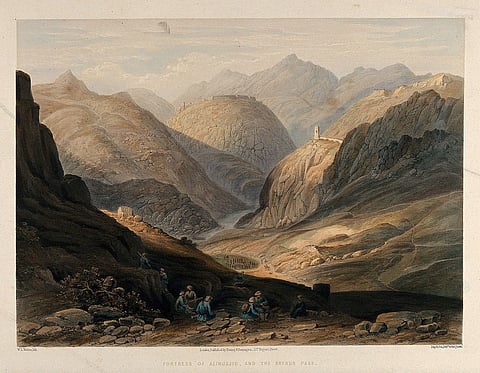Through the Khyber, once more
In the wee hours of 28 December 2008, the residents of Peshawar awoke to the thundering of artillery fire. It quickly became clear that the Pakistani military had launched an operation in Khyber Agency, which abuts the provincial capital to the west. The aim: to clear the historic Khyber Pass for NATO supplies heading into Afghanistan, through an area that had, over the previous year, come under increasing attacks from Taliban militants. A month later, on 3 February 2009, militants blew up a bridge in the Pass, halting all traffic. Both of these initiatives constitute only the latest in centuries' of attempts to control this crucial 48 kilometres of winding track.
The Khyber Pass, which connects Afghanistan with Pakistan and the Kabul Valley with the Indus plains, has borne witness to the marches of numerous armies. Indeed, this defile across the Hindukush possesses an almost mythical history; before the British and Afghans themselves, the pass was also used by the Persians, Greeks and Mughals. It is said that Darius the Great marched through the pass during the fifth century BC in order to reach the Indus plains. Some two centuries later, columns of Alexander's army moved into the Subcontinent through the same route.

